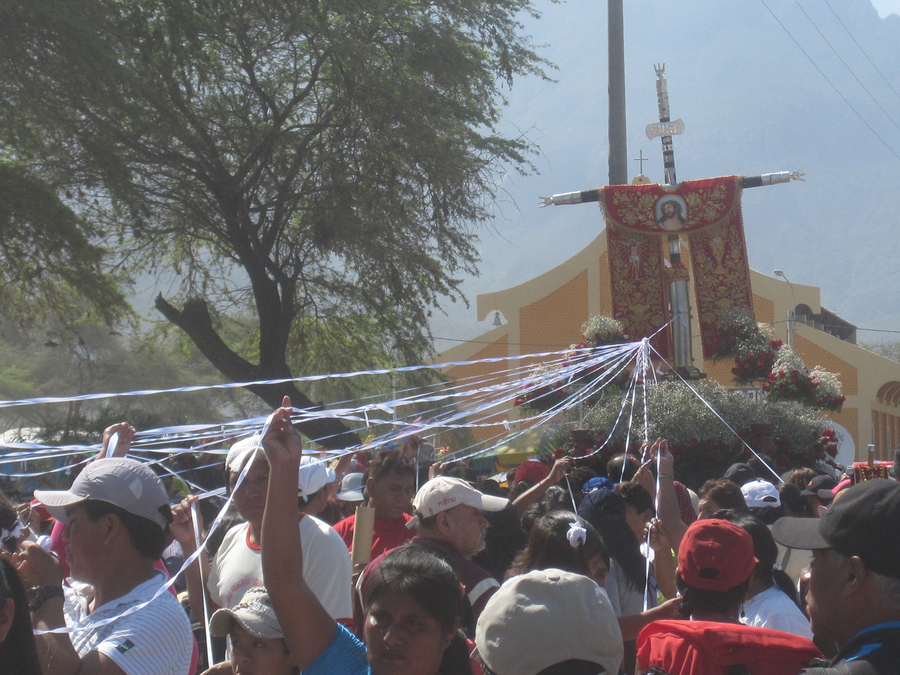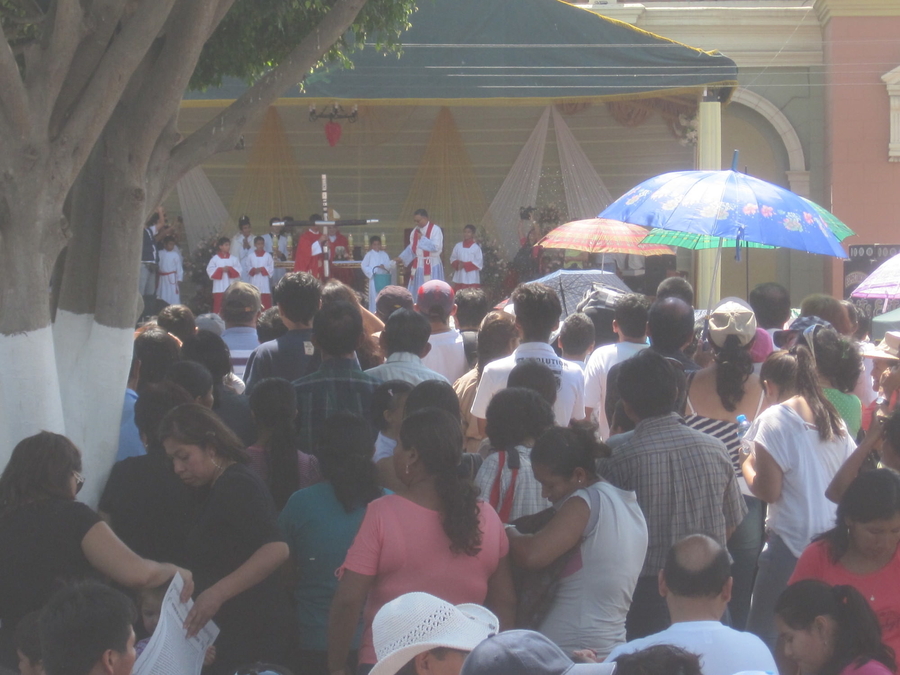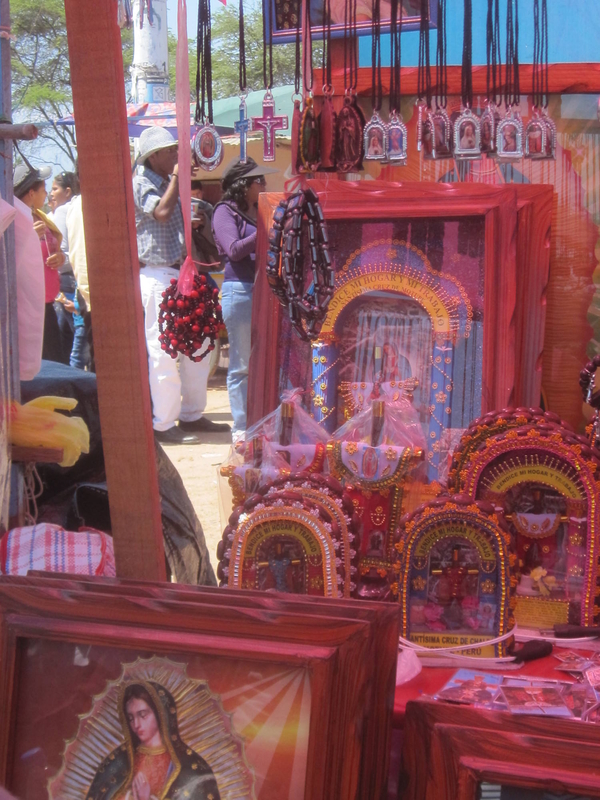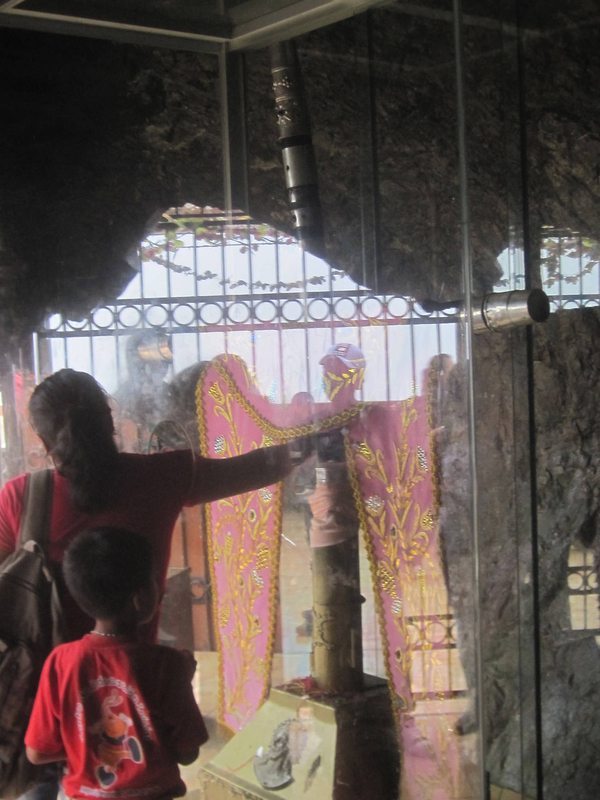Emily C. Floyd is Lecturer of Visual Culture and Art before 1700 at University College London and Editor and Curator at the Center for the Study of Material and Visual Culture of Religion at Yale University (MAVCOR). Her current research centers on normative whiteness, implicit depictions of race, and intersecting ideas of sanctity, monstrosity, and the body in colonial South America. Her book on prints made in colonial Lima and their regional and transatlantic impact, The Mobile Image: Prints from Lima in the Andes and Beyond, 1584-1824 is forthcoming in 2025 from University of Texas Press.
According to the hagiography of the Cross of Motupe, in the second half of the nineteenth century a Franciscan friar named Juan Agustín Abad living near Motupe, Peru, carved the cross from two thick lengths of guayacán wood, a species native to the region.1 Before his death, the friar encouraged the citizens of the town of Motupe to seek out the cross if they passed through difficult times. The cross remained hidden in a narrow grotto perched high up the steep and rocky slopes of nearby Mt. Chalpón until 1868, when apocalyptic fears drove the citizens of Motupe to place their hopes in the cross. Credited with saving the town from sure disaster, the cross became the centerpiece of a devotion that drew pilgrims from throughout the region, and eventually from throughout Peru.
By 2012, when I attended the August 5 festival of the cross, the pilgrimage had developed into an elaborate celebration that included processions, masses, and a sprawling market fair that enveloped the central plaza and spilled out into the side streets of the small town. The near chaos of the festival was augmented that year by record numbers of pilgrims who flooded the streets. On July 5 of the previous year, thieves had stolen the cross from its grotto-shrine and cut it apart to remove the bands of precious metals that devotees had gifted to it out of gratitude. While the August 2011 festival had ultimately taken place as planned, the festival I visited in 2012 may have been the first opportunity for many devotees to see the cross after the theft.
Across time, space, and religious tradition there are numerous examples of cult images destroyed or stolen only to be recreated or retrieved by their devotees. Thus it is no surprise that when search teams recovered the cross in fragments, money spilled from donors' pockets to help fund the restoration efforts. In a country where objects of popular Catholic devotion are considered part of the national “patrimony” and thus representative of Peruvian culture more broadly, it is perhaps unsurprising that these donors included such figures as then president Alan García. Once the restorers pronounced the restoration complete, the concern shifted from rebuilding the cross to protecting it and preventing future robberies. How to preserve the cross without jeopardizing the nature of the devotion that had developed around it?
The devotion to the Cross of Motupe prior to the theft was characterized by a noteworthy intimacy between devotees and cross. The devotees not only addressed the cross with titles such as madrecita, nuestra madre (little mother, our mother), but they also dressed her in precious metal and ornately embroidered mantels, they perfumed her, and they made a point of touching her. As Susan Verdi Webster has observed in her discussion of Sevillian processional sculptures, wood is a warm material, approximating human skin.2 It is in part for this reason that first Spanish and then New World sculptors favored it for the carving of saints, virgins, and Christs. By touching the smooth wood of the Cross of Motupe, devotees gained direct contact with an object (even entity) perceived as a maternal protectress. They also touched her with objects—rosaries, bottles of water,3 pieces of cloth, miniature shrines, and small figurines. These objects seem to have become imbued with something of the cross's essence, even with her distinct scent, a scent that, while likely the product of the perfumes thrown on her, was characterized by devotees as intrinsic to her being.4
For believers accustomed to such direct access to their cross, the violent removal and destruction perpetuated by thieves in 2011 inspired tearful outpourings of dismay, which the cameras of news outlets captured and broadcast throughout Peru. The Motupan authorities’ efforts to protect the cross after its recovery acknowledged the fervor of devotees and the centrality of sensory dimensions to ritual practices surrounding the cross. Simultaneously, those charged with the cross’s custody acted to prevent future incidents. The confraternity of the cross purchased surveillance equipment for the shrine; cameras now record pilgrims' visits. The chief restorer, César Maguiña Gómez, forbade the use of perfumes, concerned that they might compromise the adhesives holding together the severed pieces of wood. Lastly, when the faithful returned the restored cross to its grotto, they placed it within a newly purchased case of bullet proof glass. No longer will pilgrims be able to take family portraits with the cross, at least, not without the glare of the camera flash obscuring the photograph. The glass is not, however, the sterile enclosure of a museum case. Instead, it deliberately accommodates desires to touch as well as see: A circular opening in the front of the case allows pilgrims to reach through, one at a time, each having the opportunity to enter into direct contact with their madrecita.
Notes
Notes
1. For the complete story see Carlos del Castillo Niño, Motupe en la Historia (Lima, Peru, 1968), 233-249.
2. Susan Verdi Webster, Art and Ritual in Golden-Age Spain: Sevillian Confraternities and the Processional Sculpture of Holy Week, (Princeton, NJ: Princeton University Press, 1998), 104.
3. The water may come from the small spring associated with the site.
4. For example, on July 5, 2011 during the search for the cross, the Peruvian newspaper El Comercio quoted the mayor of Motupe, Carlos Falla Castillo: “we are directing our search towards Pueblo Nuevo, where a suspicious mototaxi has been seen which emanated a scent that only our cross possesses, as the devotees have the custom of throwing scents on the sacred wood.” The comment simultaneously acknowledges the man-made nature of the scent, and attests to its unique association with the Cross of Motupe.
Keywords
Imprint
10.22332/con.obj.2014.20
1. Emily C. Floyd, "The Cross of Motupe," Object Narrative, in Conversations: An Online Journal of the Center for the Study of Material and Visual Cultures of Religion (2014), doi:10.22332/con.obj.2014.20
Floyd, Emily C. "The Cross of Motupe." Object Narrative. In Conversations: An Online Journal of the Center for the Study of Material and Visual Cultures of Religion (2014). doi:10.22332/con.obj.2014.20








